
Rediscovering Japan

Rediscovering Japan
Travel (Takahashi/Kurashiki (Okayama))

by tomizuta
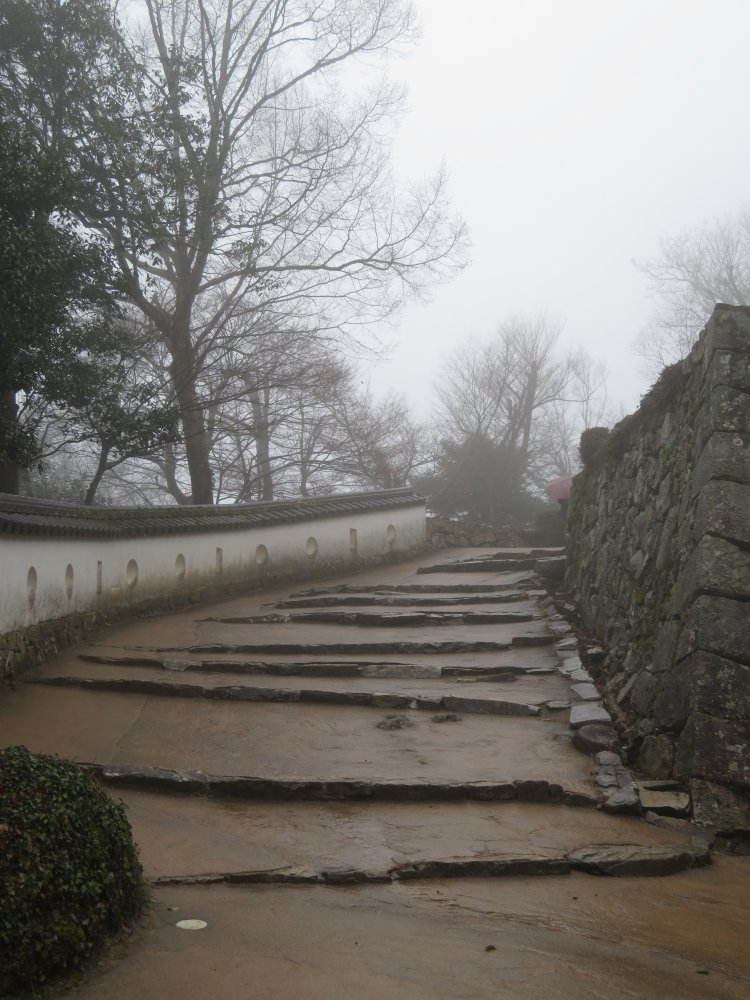
The path leading up to Bicchuu Matsuyama Castle
It is about a forty kilometers drive to Takahashi City on two single lane roads to the north from the Sanyodo motorway junction. The route goes through many forests and mountains of several hundred meters above sea level. One mountain we passed by was Onigajou (castle of oni). Oni is a fictional character in folk lore which is similar to an ogre.
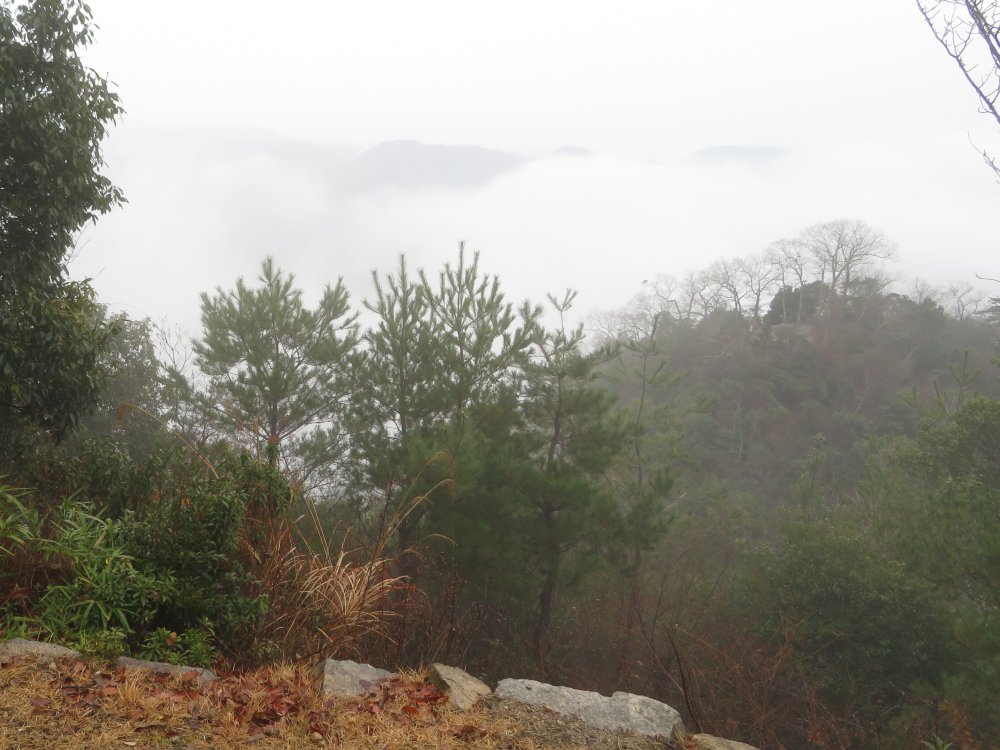
It isn't difficult to imagine ogres (Onis) lurking in the deep forests. From Mount Garyuu where Bicchuu Matsuyama Castle sits atop
I touched upon folklore in the articles on Iwate (Part 2, Tono City) and Tomioka. There is a famous folk lore called Momotarou. The tale is that Momotarou
was born from a peach. He grew up to be strong and courageous. He went
on a quest to punish the onis that lived in Oni Island (Onigashima) who
kept vandalizing the nearby villages. He took with him some cakes made
from kibi grain. On his way, a dog, a monkey and a pheasant all asked where
he was headed for. They all volunteered to accompany him if they were given
a kibi cake. The group successfully defeated the onis who promised never
to vandalize again. Although there are many variants throughout Japan,
Okayama is thought as the location of the story as Kibi is the ancient
name of the region. Indeed Okayama Prefecture uses the characters of the
Momotaro tale as the Prefectures mascots. Looking at the scenery on the
way, we thought it was no wonder that our ancestors believed in the presence
of onis in the deeply forested areas.
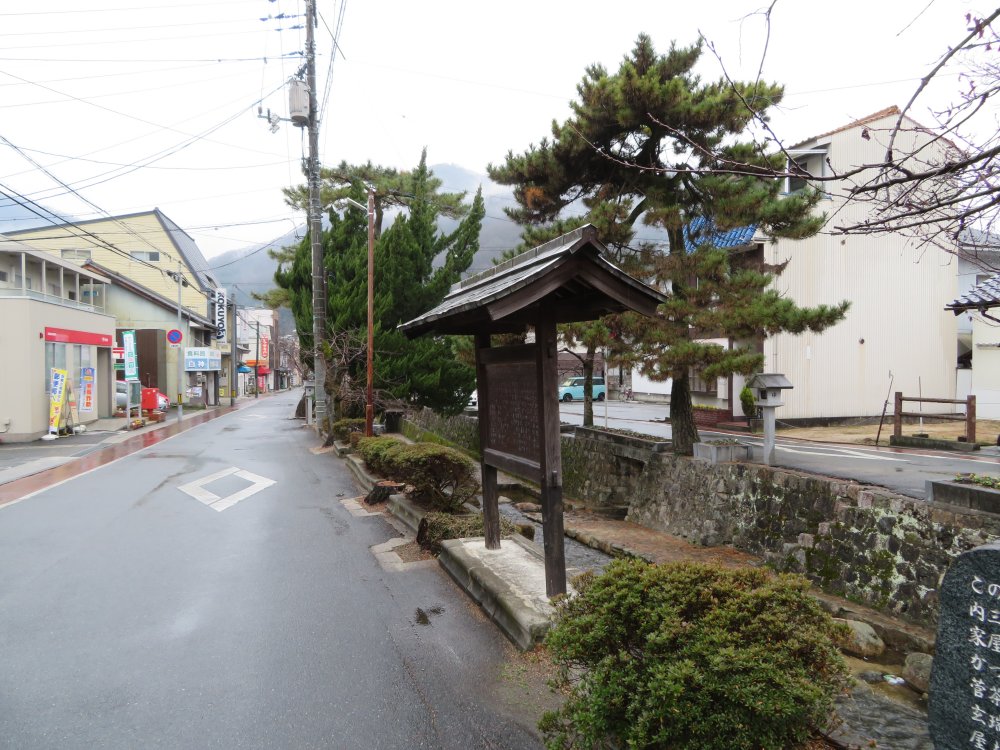
The picturesque district of Takahashi City. The creek on the right was the moat that separated the Castle district on the right to the township (joukamachi) on the left.
In the article on Tomioka, I wrote about Joe Niijima and Annnaka Church, the first Christian church founded by a Japanese person. In Takahashi City, we first visited Takahashi Church, where Joe Niijima visited in 1880, two years after founding Annnaka Church. Joe Niijima visited this church, as his patron who made it possible for him to stow away to America came from Bicchuu Matsuyama fiefdom and he had close ties and was gratified to the district. The church completed in 1889 is one of the oldest Protestant churches from the Meiji era. The church is open to visitors, but unfortunately it had closed for the day at 5pm. It is certainly a beautiful building from the Meiji era. You can see some contemporary buildings in the article on Inuyama, where I present Meiji-mura, an open air museum. The church is located in the corner of the cityfs picturesque area (gbikan chikuh) about a 10 minutesf walk from Takahashi JR Station.
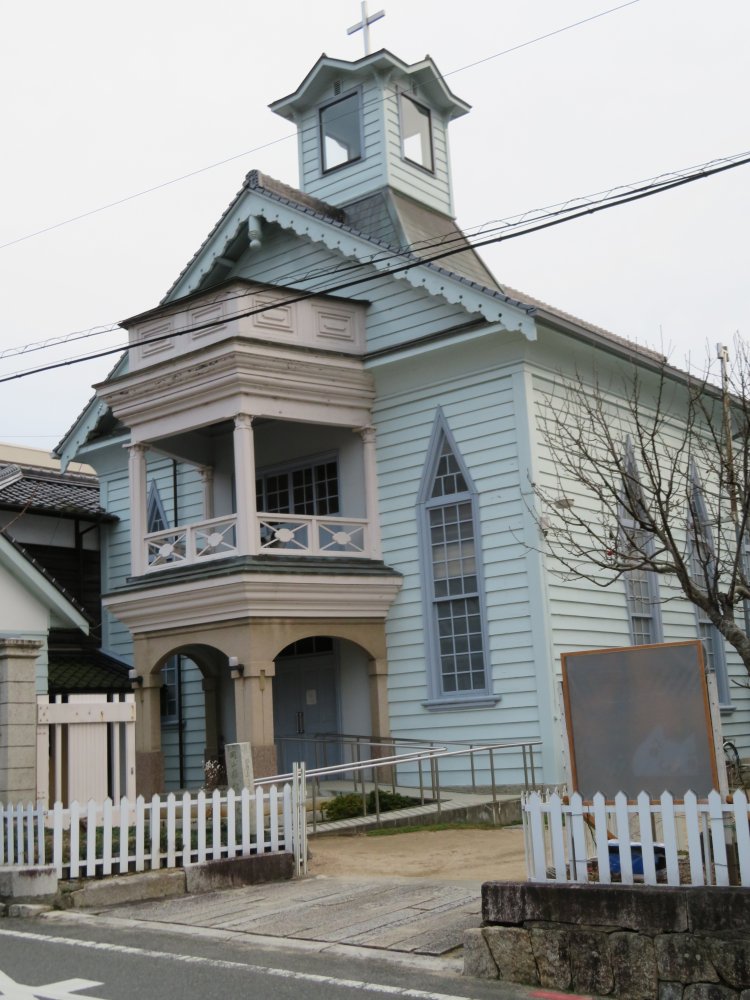
The beautiful Takahashi Church built in 1889, the second oldest existing Protestant church after the chapel of Doushisha University in Kyoto.
It was drizzling when we visited Raikyuuji temple the following morning. The temple is another 5 minutesf walk from Takahashi Church. Raikyuuji is a Zen temple of the Rinzai Sect, founded in the early 14th century by order of Takauji Ashikaga, the founder of the Ashikaga (Muromachi) Bakufu (military government) that was overturned by Nobunaga Oda in the latter half of the 16th century and finally succeeded by the Tokugawa Bakufu. Takauji ordered that all regions have a temple (Ankokuji) to pray for the safety of the country and express condolences to Emperor Godaigo that he had defeated to found his military government. Raikyuuji was the Ankokuji temple that was founded for Bizen (now Okayama) area.
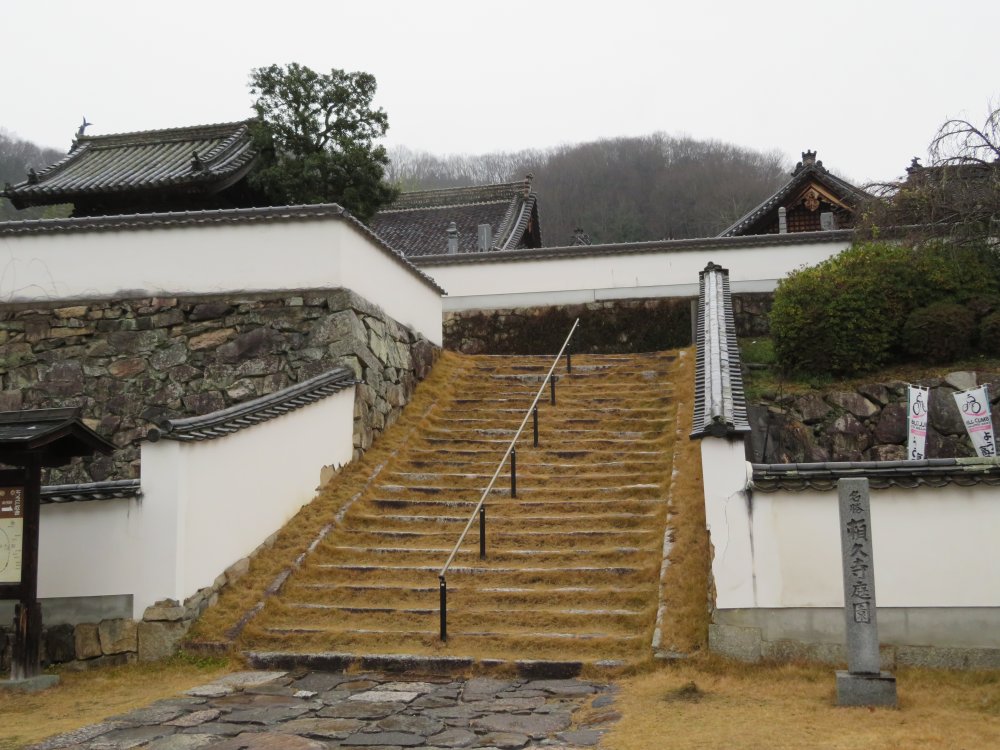
The entrance to Raikyuuji Temple. Raikyuuji is a Zen temple and was the Ankokuji temple for the Bizen (now Okayama) area.
Raikyuuji is particularly known for its Japanese garden designed by Enshuu Kobori. Enshuu had real artistic talent. Not only is he the founder of Enshuu Sadou (tea ritual) School, he is an architect that became the Minister of Civil Works of the Tokugawa government and left many garden masterpieces. His work includes the gardens of Nijou Castle in Kyoto, Denpouin in Asakusa amongst others. Enshuu was the seconf feudal lord of the fiefdom of Bizen Matsuyama, resided in Raikyuuji while Bicchuu Matsuyama Castle that I will talk about shortly was rebuilt and created the gardens of Raikyuuji. Created in 1609, it is the earliest of his works. The garden is based on Zen sect belief of simplicity and the importance of meditation. It uses Karesansui where waters are depicted by sand, and the garden beautifully blends into the background scenery, extending from the garden in front of the viewer, then the middle sized mountain in the back and finally melting into the higher mountain further away.
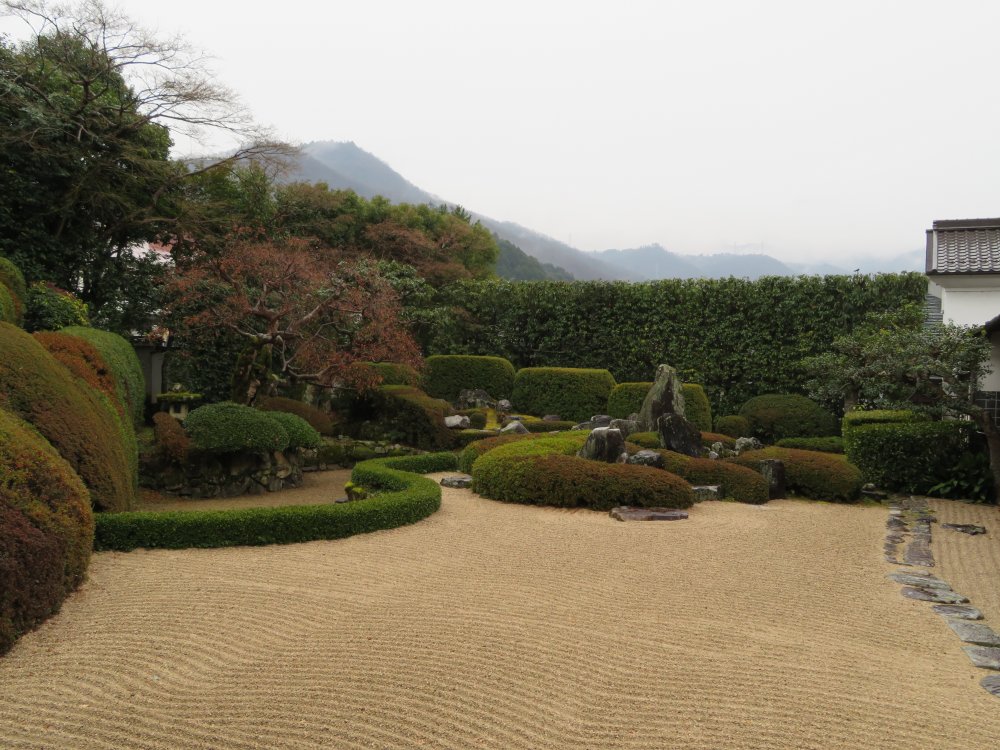
The gardens of Raikyuuji Temple is one of Enshuu Kobori's earliest masterpieces.
We then drove to Bicchuu Matsuyama Castle about 5 kilometers from the city center of Takahashi. The castle is on the top of Mount Garyuu, about 430 meters above sea level. I talked about Japanese castles in the article on Inuyama. At the peak of the civil war era in the early 16th century, many castles were built on hilltops for defense from the neighboring feudal lords. Gradually as peace returned to Japan from the late 16th century, castles built on the plains became the norm, as the magnificent castles became more a symbol of the power of the feudal lords than purely a defense fort. I wrote in the article on Matsushiro about a popular annual TV drama series, Taiga Drama by NHK that is aired every Sunday for 40 minutes from 8pm and that the 2016 series was about the Sanada Family, The opening of the weekly series was a shot from a castle with the Sanada banner. It was not until recently that I learned that the shot was taken at Bicchuu Matsuyama Castle with some CG rearrangement, although the castle had no relation with the Sanada family.
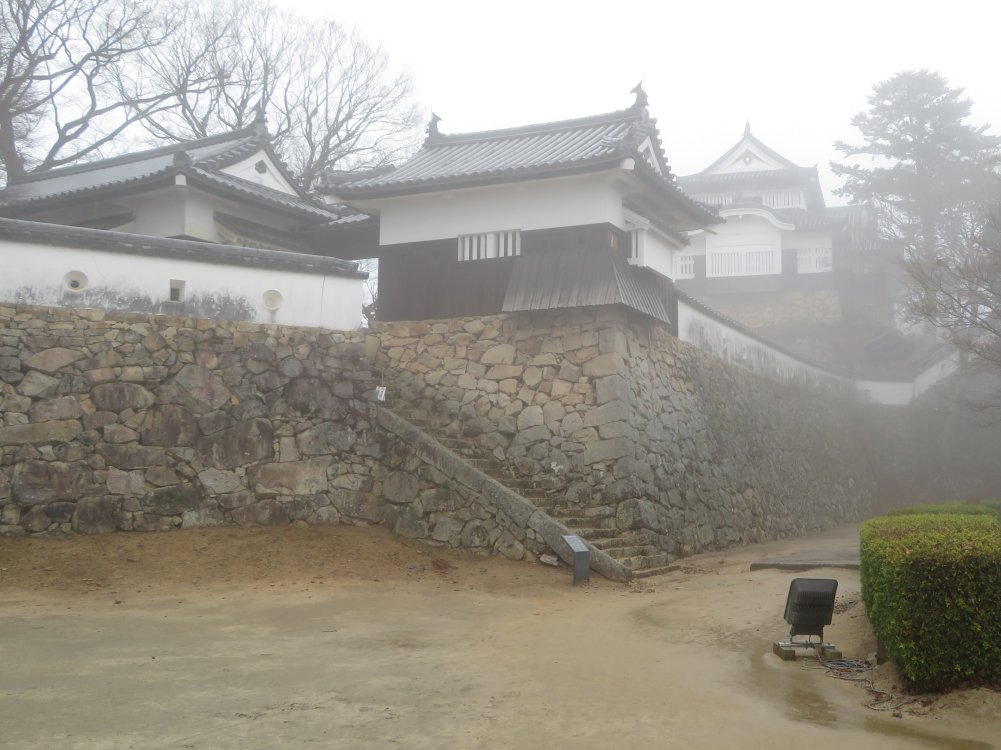
Bicchuu Matsuyama Castle is the only surviving mountain top castle dating from the early Edo era.
Bicchuu Matsuyama Castle is the only surviving castle on a hilltop with
an existing keep. After the collapse of the Tokugawa shogunate, most castles
were abandoned and demolished. I learned on this occasion that the reason
Bicchuu Matsuyama Castle escaped this fate was because it is located an
hourfs walk away from the township, no one bothered to take the pains and
subsequently efforts to preserve the castle were undertaken. There was
a car park from where you had to ride on a shuttle bus for \300 to a car
park further up. From there it is a 700 meters or a 20 minutesf walk up
to the castle. The drizzle was now getting worse but fortunately the path
leading up to the castle was not yet that muddy or slippery. We were told
that the reason for the shuttle bus was because of congestion, but on that
morning visitors were scarce. On top of admiring the keep at the top and
the surrounding castle walls, you get a beautiful sight of the township
below, but that was not possible due to the heavy mist. In any event it
is certainly a worthwhile visit to get to see an intact mountain castle
keep dating back to the 16th century.
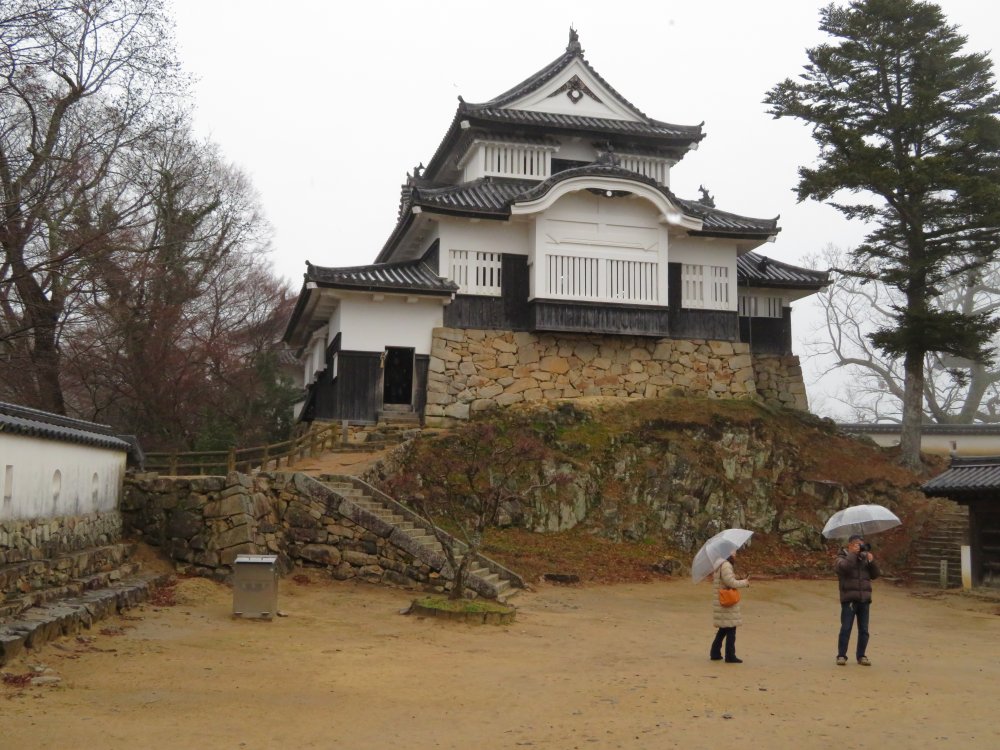
The keep. You can go inside to see the displays. which are quite informative.
From the castle, we made a 40 minutesf drive to the Fukiya district within
Takahashi City. Historically there were numerous mines in the Chugoku Mountain
Range, but few if any left are still operating as far as minerals are concerned.
There was a copper mine in Fukiya from the early Edo period in the 16th
century, which started to produce a pigment called Bengara by oxidizing
sulphuric iron ore as a bi-product. Fukiya flourished as the dominant producer
of Bengara which was used as a red pigment for ceramics and pottery such
as Arita and Kutani, as well as pillars of shrines and temples. This lasted
till the 1960s when the production was discontinued due to the pollution
caused by the emission of hydrogen sulphide in particular. Before strolling
the streets of Fukiya, we had lunch at one of the few restaurants. The
food served is quite limited, mostly soba and udon noodles. We had both
and was pleasantly surprised with the quality of the hand kneaded noodles
and the containing soup. I particularly would recommend sansai udon (hot
udon with wild vegetables).
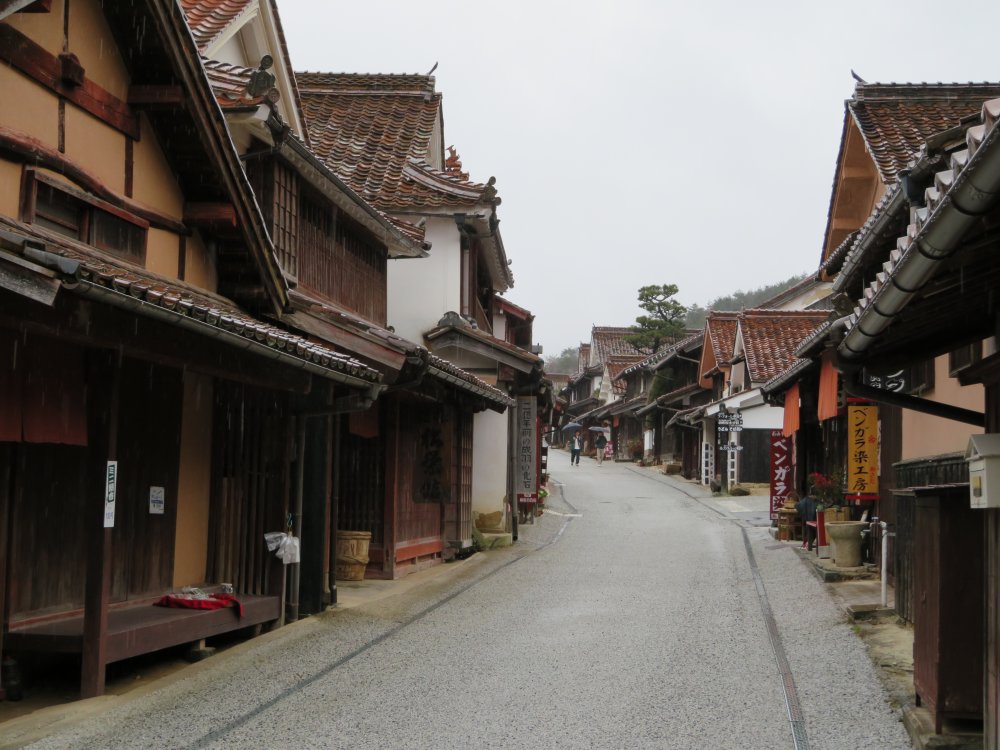
A view of the main street of the Fukiya district of Takahashi City
It is quite a remarkable sight to view the streets with the row of red
colored buildings so well preserved. The buildings are one of the oldest
to be designated as Important Preservation District for Groups of Historic
Buildings. It was designated in 1977 two years after the system started.
We came across a sake brewery with a shop on the opposite side of the road.
I spotted some sake and asked if they came from the brewery. The pleasant
shop lady responded that they had discontinued brewing sake and were now
only making miso and soy sauce. We bought a bengara handkerchief and Kinzanji
miso, which can be used as relish for cucumber and goes well with sake.
We then left Fukiya to head south to Kurashiki which is about 60 kilometers
away.
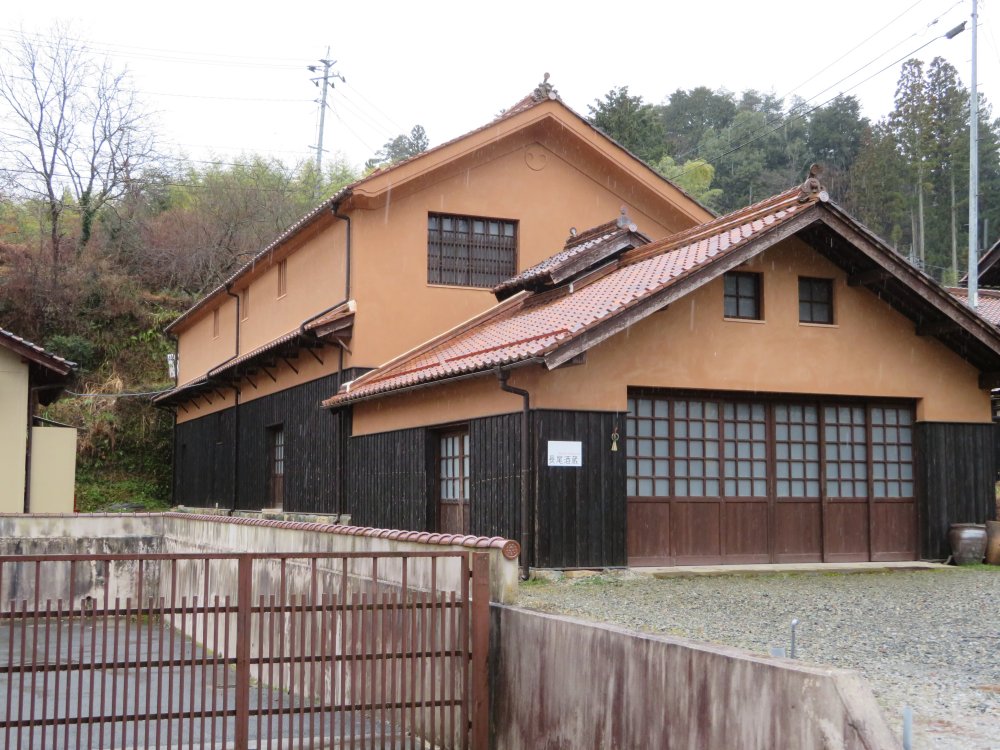
The sake brewery had discontinued brewing sake and was concentrating on miso and soy sauce.
Kurashiki is the third largest city in the Chugoku Region following Hiroshima
and Okayama with a population of slightly less than 500,000. You should
know that the Tokugawa shogunate directly owned parts of land and mines
throughout the country called Tenryou. Tax raised from Tenryou supported
the shogunatefs budget. Kurashuki was a Tenryou as was the copper mine
in Fukiya. This is in contrast to Okayama City, close by and slightly larger
than Kurashiki, which was the Joukamachi of Okayama Fiefdom governed by
the Ikeda Family. Because of its location as a port town, goods from the
area as well as rice collected as tax were handled, stored and sold by
merchants. These stores are called Kurayashiki. Kurashiki is famous for
its Bikan chiku (picturesque district) which preserves buildings from the
Edo, Meiji and Taishou period. We stayed at a ryokan, converted from a
Kurayashiki dating back to the Edo era.
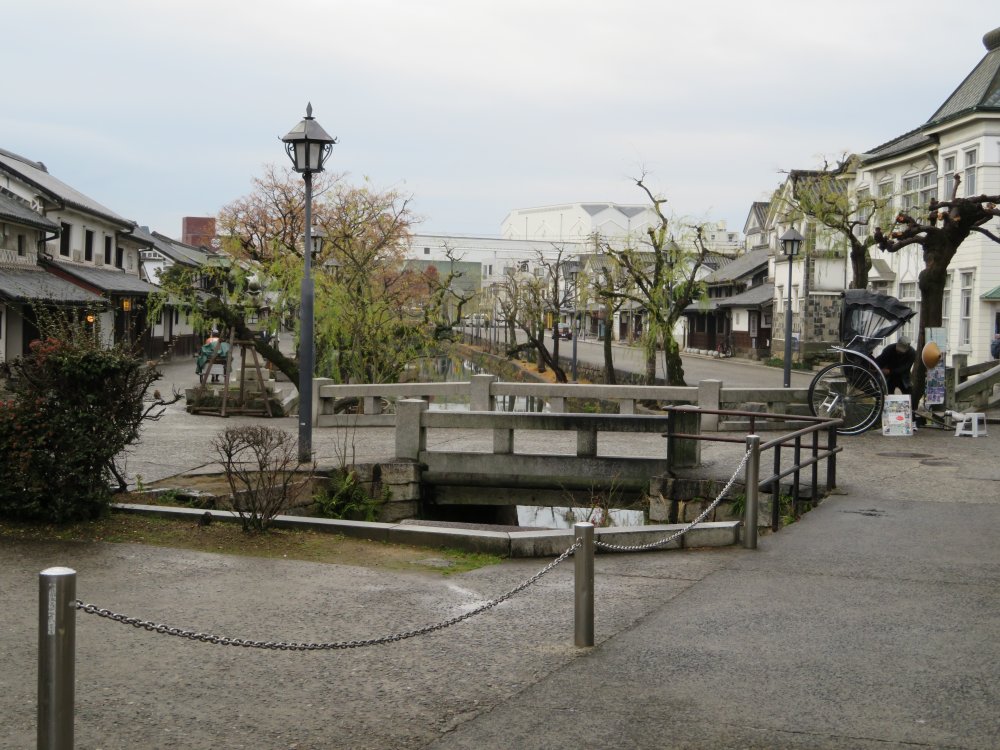
The picturesque district of Kurashiki City. There were many sightseeing rickshaws.
I did not forget to purchase a local sake. Bizen is famous for a type of
rice called Omachi which is difficult to grow but most suitable for sake
brewing. Okayama Prefecture produces more than 90% of Omachi. Most is purchased
by breweries in the area. So you should make sure you are buying sake made
from Omachi when travelling in the area.
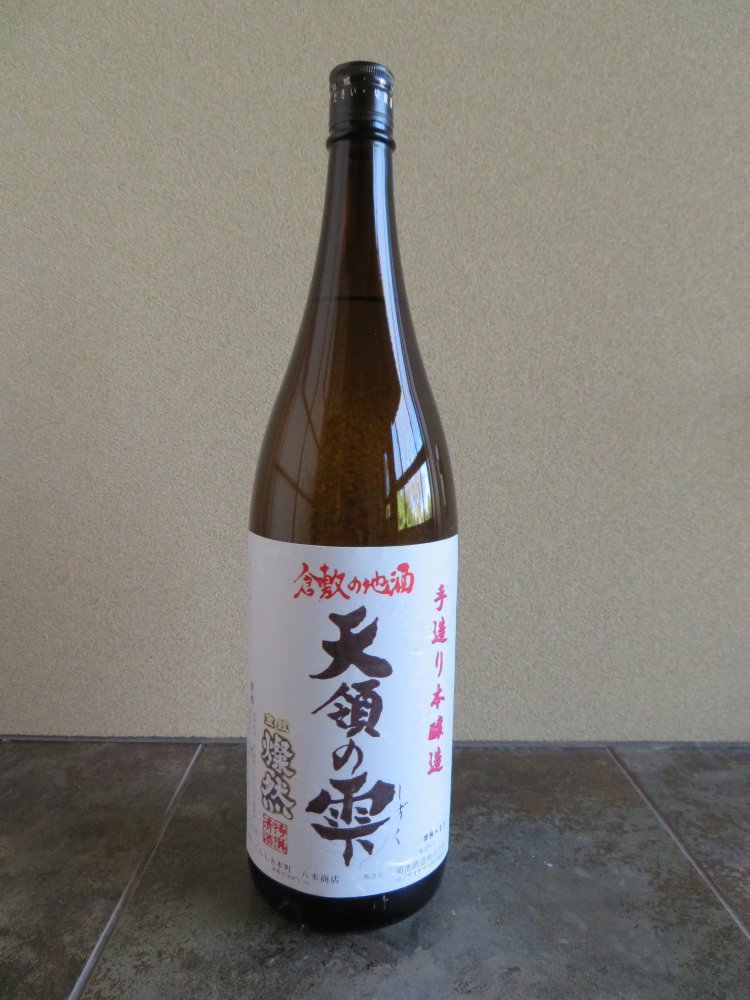
1.8 liters honjouzou of Sanzen. Rice used is Bizen Omachi.